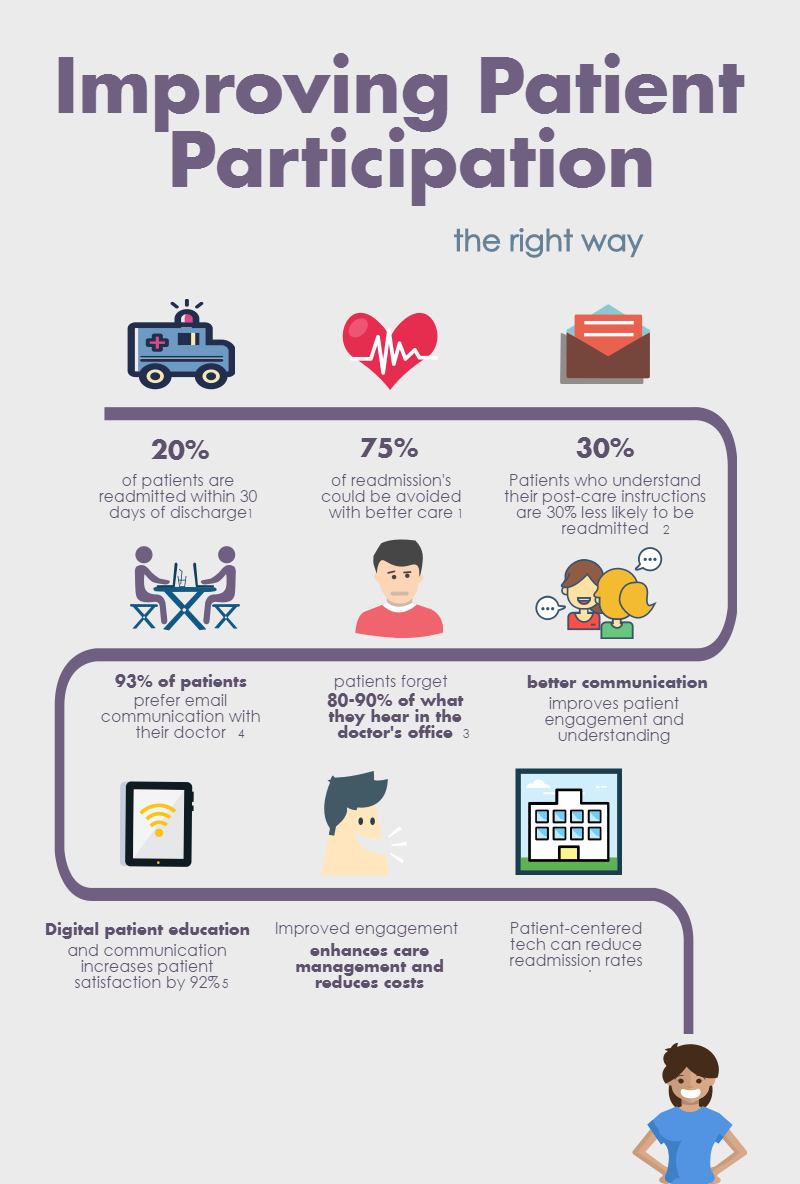Online health records and patient portals have long since dominated the discussion in healthcare globally. While there are questions about its adoption and meaningful use, online health records and portals have ushered in a new era in digital health, indicating that technology in healthcare is the way forward.
In keeping with this trend, this year started to see a growing interest in using technology to find solutions to common issues that health providers have faced for many years. One of the biggest concerns has probably been gaps in communication between the provider and patient. With limited face-time and lack of follow-ups, providers have had to contend with non-adherence, patient dissatisfaction and poor health outcomes.
Previously, studies have indicated that patients fail to recall almost 80% of their consultation with their provider, leading to prescriptions not being followed as advised. For hospitals and clinics, this leads to limited patient retention and increased acquisition costs. Unfortunately, the existing system of care delivery, that relies on patients visiting their providers, has only perpetuated this problem.
Perhaps this is what has led to a call for meaningful “patient engagement” – a system where patients and their health providers collaboratively work towards the common goal of better care through communication. With both parties standing to gain from this, it is a no-brainer why health organizations and providers are exploring how they can use technology to achieve this.
Patient engagement is for everyone
Whether it is a solo practitioner, hospital or healthcare organization, engaging with your customer base to educate, empower and collaborate in key decisions is important for your business. For health providers, this holds true across almost all specializations for simple follow-ups care to chronic care and monitoring.

Active participation ensures better adherence through improved awareness about personal health. One of the ways that health providers have started to engage with their patients has been through patient portals. Over the past few years, patient portals have seen high adoption by providers and patients of all ages irrespective of practice size, according to research by AthenaHealth. Many health providers have found this to have improved patient satisfaction and grow clinic revenues through referrals.
Patient portals have used technology to streamline and simplify patient-provider engagements like appointment booking, accessing health records and even paying bills. But meaningful engagement involves communication – the logical next-step in patient portal technology.
Patient Engagement in 2017
This year provider-patient engagement has been largely centered around telemedicine and its remote care capability. From initially fearing that they would lose footfalls to their clinic, providers are now seeing the merits of offering telemedicine and remote monitoring services. This way, patients al least have a way of following-up and providers have a way of keeping track of their health.
Telemedicine and patient engagement are not just limited to the medical practice. Pharma companies and companies in therapeutics and research also stand to gain by adopting this technology to connect with their target audience. It is also useful for home-care agencies and chronic care situations where regular follow-up is often a challenge.
Integrating communicative technology- be it automated notifications, telemedicine, online messaging or remote care and health tracking into patient portals is the need today. With health data becoming digitized with existing HMS, EHR and EMR systems, analyzing this data is going to be key to helping patients make sense of their health. So instead of simply sharing a health report, patients can ask questions and providers can help make better decisions that will positively impact their lives.
Telemedicine or remote health monitoring technology also has given health providers a platform to collaborate and work towards providing their patients with the best care. Never before has technology enabled this kind of multi-disciplinary healthcare delivery, holding great promise for the future of healthcare.
Patient engagement on the Virtual Practice
The Virtual Practice patient portal offers health providers the unique capability to engage with their patients, one-on-one, on their own terms. Built around its online health records or Patient PHR, providers can collaborate with their patients using Patient Questions, Video Consultations or Remote Patient Monitoring services.
The platform offers a secure communication channel between provider and patient, exclusively for health engagement, unlike social media, emails or text messages. As it is linked to the Patient PHR (Personal Health Records), proper documentation of every engagement is possible, serving as a useful reference for patients. This ensures better adherence and limits chances of miscommunication which are the main reasons for patient engagement.
By virtue of having a web and mobile application, patient engagement on the Virtual Practice is truly aimed at the being the future of patient engagement, offering convenience and care to patients while enabling healthcare providers to grow their practice like never before.



